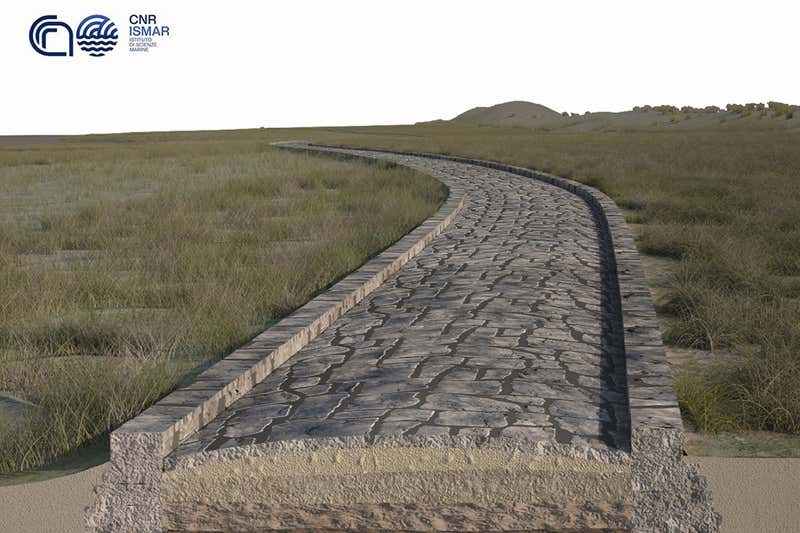ART WORLD NEWS
Ancient Roman Road Discovered at the Bottom of Venice Lagoon
Rising waters threaten Venice’s cultural heritage, but untold treasures may already be hidden on the seafloor. Beneath the murky waves of the Venice Lagoon, researchers have discovered the remains of an ancient Roman road and other possible port facilities, like a dock, that may predate the founding of the Italian city. Their findings were published on Thursday in the journal Scientific Reports.
The study’s leader, Fantina Madricardo, a geophysicist at the Institute of Marine Science (ISMAR) in Venice, began an extensive sonar survey of the Venice Lagoon’s channels in 2013 to better understand the city’s ancient landscape. “It’s a paradox that in an environment as well known as the Venice Lagoon, the tidal channels were really not well studied,” she told ARTnews in a phone interview.
Related Articles
Venice’s turbid waters and swift tidal currents make it challenging to explore the seafloor using traditional underwater archaeology methods like diving. However, newer remote-sensing technologies like multibeam sonar have allowed researchers like Madricardo to create high-resolution 3D maps of the seafloor without putting on a wetsuit.
While poring over the sonar data from this survey, Madricardo noticed some structures that looked human-made in part of the lagoon known as the Treporti Channel, northeast of central Venice. “All of them were in alignment,” she said. “I thought: This cannot be a coincidence.”
Upon further investigation, Madricardo learned that archaeologists in the 1980s had found part of this long, strange feature and speculated that it may have been a road. Using their new data, Madricardo and her colleagues counted 12 structures aligned over the span of 3,740 feet at a depth of about 13–16 feet. Some of these sunken structures were up to 9 feet tall and 173 feet long.
With the help of underwater footage captured by police divers, Madricardo and her colleagues confirmed that these structures had regular, smooth-faced stones that were typically used to pave Roman roads. The researchers concluded that this was likely an old imperial Roman road located on a sandy ridge that was once along the beach at sea level some 2,000 years ago but is now submerged. They also documented other large structures, some as long as 442 feet, that may be old Roman docks.
“The pieces came together like a puzzle,” Madricardo said. “It’s not a finished puzzle, of course.”
Some of the biggest missing pieces concern important dates in the road’s history: When was it used? When was it abandoned? At what point in the last 2,000 years was it covered by the sea? The researchers took core samples of the road’s remains, and radiocarbon tests could help them pinpoint the date of its construction and use.
The Romans built tens of thousands of miles of roads across their empire to connect trading centers and military outposts. This one may have once been attached to a bigger network, traversed by sailors and other travelers making a journey between what is today Chioggia, a town at the southern edge of the lagoon, and Altinum, the ancient Roman city further north on the mainland.
Venice was founded in the 5th century, and its landscape today is dominated by medieval sites built when the city was a maritime superpower with territories as far away as Cyprus. Past discoveries of Roman artifacts in the city and its waterways suggested that the lagoon was populated much earlier. Some scholars have argued the islands were dotted with harbor infrastructure or even residential areas as an extension of Altinum. The discovery of a road may help archaeologists determine the extent to which the area was inhabited.











